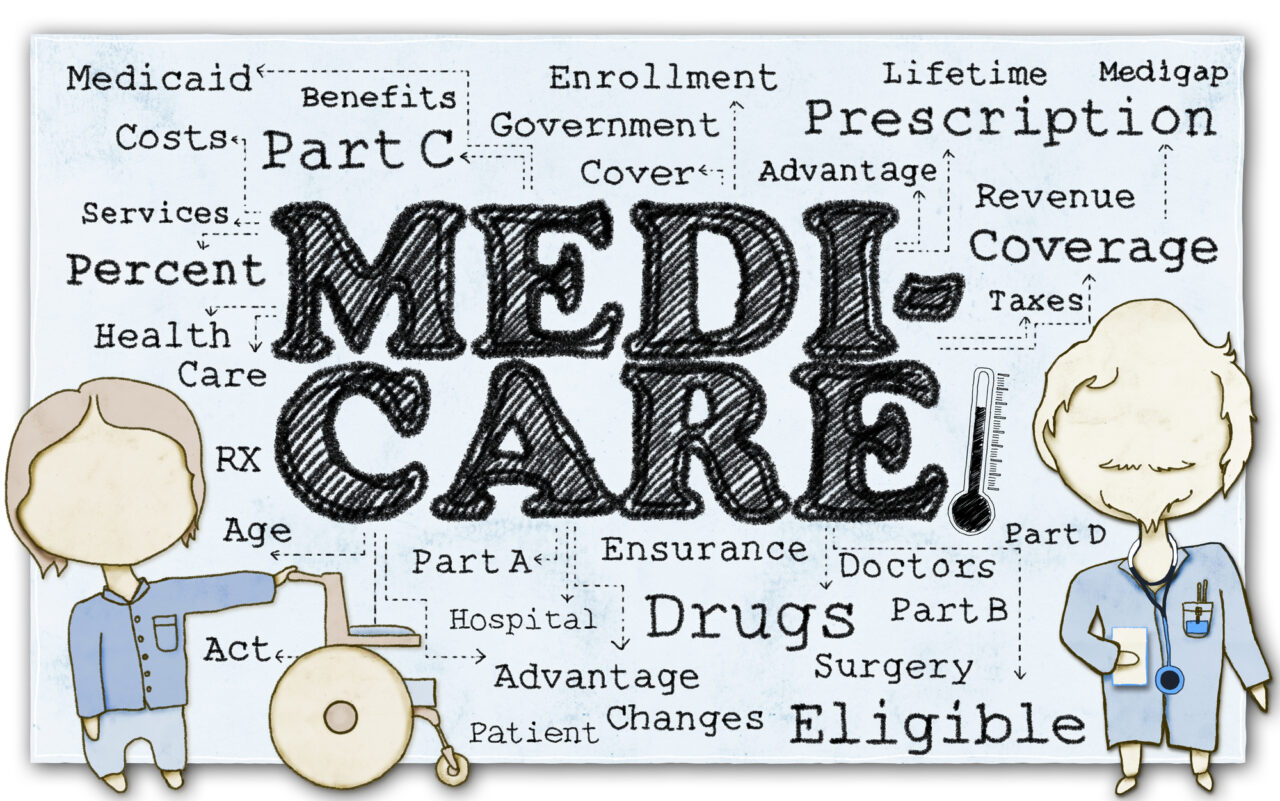There are two ways to get Original Medicare (Parts A and B)
Part A is hospital coverage, and Part B is medical coverage. Original Medicare is provided by the federal government. Benefits and coverage are the same across the country. With Original Medicare, you can also add a stand-alone Part D Prescription drug plan and/or a Medicare supplement insurance plan.
Medicare Advantage (Part C)
These plans combine your Part A and Part B coverage, and many also include Part D prescription drug coverage and other benefits such as hearing, vision, dental or fitness. Plans are offered by private insurance companies.
There are two ways to get drug coverage
You may add a stand-alone Part D prescription drug plan to Original Medicare. Or you may enroll in a Medicare Advantage plan that includes prescription drug coverage.
Original Medicare (Parts A and B) doesn’t cover everything
It doesn’t offer coverage for things like prescription drugs, hearing, dental, vision fitness memberships or financial protection. If you want additional coverage, explore plans provided by private insurance companies with the guidance from your local Health Insurance Expert, Dean Henzlik.
Location impacts coverage choices
Medicare Advantage and Part D prescription drug plans vary in coverage and cost. Medicare supplement insurance plan basic benefits are the same nationwide, except in MA, MN and WI. Insurance companies may offer several plans where you live.
Calculate all your Medicare costs
You’re responsible for monthly premiums and out-of-pocket costs like deductibles, copays and coinsurance. Your costs will vary based on the coverage chosen, the health services used in the year and if you have a financial assistance for Medicare costs.
Protection from high out-of-pocket costs in available
Medicare Advantage plans put a cap on out-of-pocket costs for covered services. It’s called the “annual out-of-pocket maximum” This doesn’t exist for Original Medicare. Total out-of-pocket costs and financial protections may vary for in-network vs. out-of-network costs. Medigap plans help pay some out-of-pocket costs not paid by Original Medicare. A variety of plans are available that offer different levels of financial protection. They’re organized by letters, such as “Plan A” or Plan G”. Both Medicare Advantage and Medigap plans are offered by private insurance companies.
Timing matters when you first enroll in Medicare
Your Initial Enrollment Period (IEP) is your first chance to enroll in Medicare. It’s 7 months long-includes your birthday month or the 25th month of getting disability benefits, plus the 3 months before and 3 months after. You may qualify to delay Medicare enrollment if you have creditable coverage through your or your spouse’s employer. Then, you’ll have an 8-month Special Enrollment Period (SEP) that begins either when you lose that coverage or leave your job, whichever occurs first.
If you enroll after you IEP or SEP, you could face late penalties for Medicare Part A, Part B or Part D.
You may be able to enroll or make changes at other times
Medicare offers a General Enrollment Period every year January 1-March 31 for those who have missed their IEP. Medicare provides Special Enrollment Periods for qualifying life events.
The Medicare Advantage Open Enrollment Period is January 1-March 31 each year. You may switch Medicare Advantage plans or drop a plan and go back to Original Medicare at this time.
The Medicare Annual Enrollment Period is October 15-December 7 each year. You any change your coverage during this time.
Our agency can help guide you through these decisions and making changes that are right for you.



